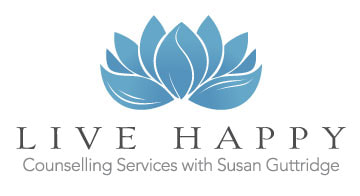|
A good nights sleep (and more importantly, consecutive nights of getting good sleep!) is incredibly important, yet it is something as adults we rarely give much attention to. Our brains need sleep in order to function properly and regulate emotion effectively. Learning is easier when we sleep well, and so is decision making. Even coping with change becomes more manageable when our brains have been rested! Jim White (2000) writes, “Poor sleeping fails to recharge the individual’s batteries. Thus, during the next day, the individual is less able to fight the effects of stress. Stress then feeds the sleep problems the following night and a vicious cycle has developed. Over a period of weeks or months, the individual’s ability to cope slowly declines. Learning how to improve the quality and quantity of sleep will leave the individual in a better state to fight daytime stress. Fighting daytime stress will help the individual overcome sleep problems. A positive cycle has replaced the vicious cycle.” Read on to learn ideas on creating and implementing a bedtime routine that soothes. Every person is unique, so please do add/edit/modify as necessary to fit your own life better.
It is important to create a bedtime routine that you can be consistent with each night, regardless of the time you go to bed. Anytime we try out a new routine, I always suggest to try following it consistently for 21 days – simply because evidence does suggest that the more frequently we do something, the more likely it is to become instinctual. So in other words, the more a behaviour is repeated, the more likely it will become a part of your routine. The following is a list of ideas for creating a soothing bedtime routine. No need to incorporate all of them – select the ones that fit for you and your life, and then create your own routine.
References & Helpful Resources: Jim White (2000). Treating Anxiety and StressJon Kabat-Zinn, Guided Mindfulness Meditation http://www.mindfulnesscds.com/collections/all-1/products/series-4 Paul McKenna http://www.paulmckenna.com/sleep Calm App (meditations and bedtime stories so you can fall asleep)
0 Comments
In her book ‘Healing from Trauma”, Jasmine Lee Cori outlines the following list of personal resources that help when healing from traumatic experiences. Personal resources are inherent capacities which individuals possess, such as their strength and abilities, healthful activities, the ability to regulate affect, a caring and trustworthy support system, and so forth. Cori additionally states that personal resources are healthy patterns, ones which create a sense of feeling good and accepting oneself in ways that are truthful, and not based in self-deception or indulgence.
If you are just starting your healing journey, or even if you are well into it, please review Cori’s list of helpful capacities below. Each capacity reflects something which can further or enhance our healing. As you read through the list, consider which capacities you possess, and which you might like to develop. How might you build and develop these capacities in your life?
Learn more in Jasmine Lee Cori’s book, Healing from Trauma: A Survivor’s Guide to Understanding your Symptoms and Reclaiming your Life.  When it comes to behaviour changing, remembering to use the techniques we are learning can be difficult. We can learn the greatest, most life-changing technique, but if we can’t remember to use it in the moment we need it the most, well then, it is rendered quite useless. Try using a memory cue to start creating a pattern of use. I call this strategy the “Sticky Dot Technique” because it involves the use of the small, circular sticky dots that can be purchased at any business supply store. Take approximately 10 sticky dots, and place them in places that will be visible to you (such as on your computer, cell phone, in the kitchen, on a coffee mug, on a mirror, and so forth). When you see a sticky dot, check in on how you are coping. What are you doing behaviourally? What sensations are you experiencing physiologically? What are you saying to yourself? You may want to remind yourself to “just breath”, or to honour your healing journey in another way. I can not take credit for the genius behind this technique! It was taught to me in 2005 by a practicum supervisor (Derrick Doige), as part of my Master’s degree. Derrick Doige is a Counsellor with Okanagan College in Vernon BC, and also has a private practice. We all need some down time to reflect and foster personal growth and enhance our self-awareness. For those who have experienced trauma(s), utilizing this “down time” is even more essential to their healing. The experience of trauma often leaves people finding that they are easily overcome by feelings of fear, worry, anxiety, panic, and/or sadness. At the beginning of counselling, and even prior to starting counselling, we may not know how to handle these overwhelming feelings. We may find it easier to “stuff” them away and ignore them. While this may help momentarily, it won’t help you heal from the trauma and it won’t enable you to move on with your life. Creating time to heal is a helpful way to work on the difficult experience while also containing those overwhelming emotions.
Be patient with yourself. At first this may be very difficult, so stay in contact with your Counsellor or a supportive friend or family member. The more caring people you have on your side encouraging you the better. Remember that trauma is something that happens to people, it doesn’t define who you are as a person. You deserve to live a life in which you are free from emotional turmoil and upset. Allowing yourself specific time to heal is a strategy that can enable you to achieve that. At first you may feel as though you have nothing to work on. You might just sit and stare at a blank page and feel unproductive. That is okay. Try a free writing exercise: this is where you put your pen to paper and just write whatever comes to mind without stopping. Research shows that by doing this, eventually what is bothering you will come to the surface. Or, you could start by looking at a picture that triggers certain memories of the trauma. You could also talk with your Counsellor about a starting point that fits you best. We are all unique, and what works for one person may not work for another. Healing is a slow process – bearing this in mind may help you keep a realistic perspective of your own process. Article originally posted 2014/04/08 posted by Susan Guttridge (susanguttridge.wordpress.com) Quote From: Healing from Trauma: A Survivor’s Guide to Understanding your Symptoms and Reclaiming your Life, by Jasmine Lee Cori |
AuthorSusan Guttridge is a trauma-informed Master level Counsellor with the clinical designation of Canadian Certified Counsellor (CCPA). She has 20+ years experience providing individual and group therapy. Archives
January 2024
Categories
All
|




 RSS Feed
RSS Feed